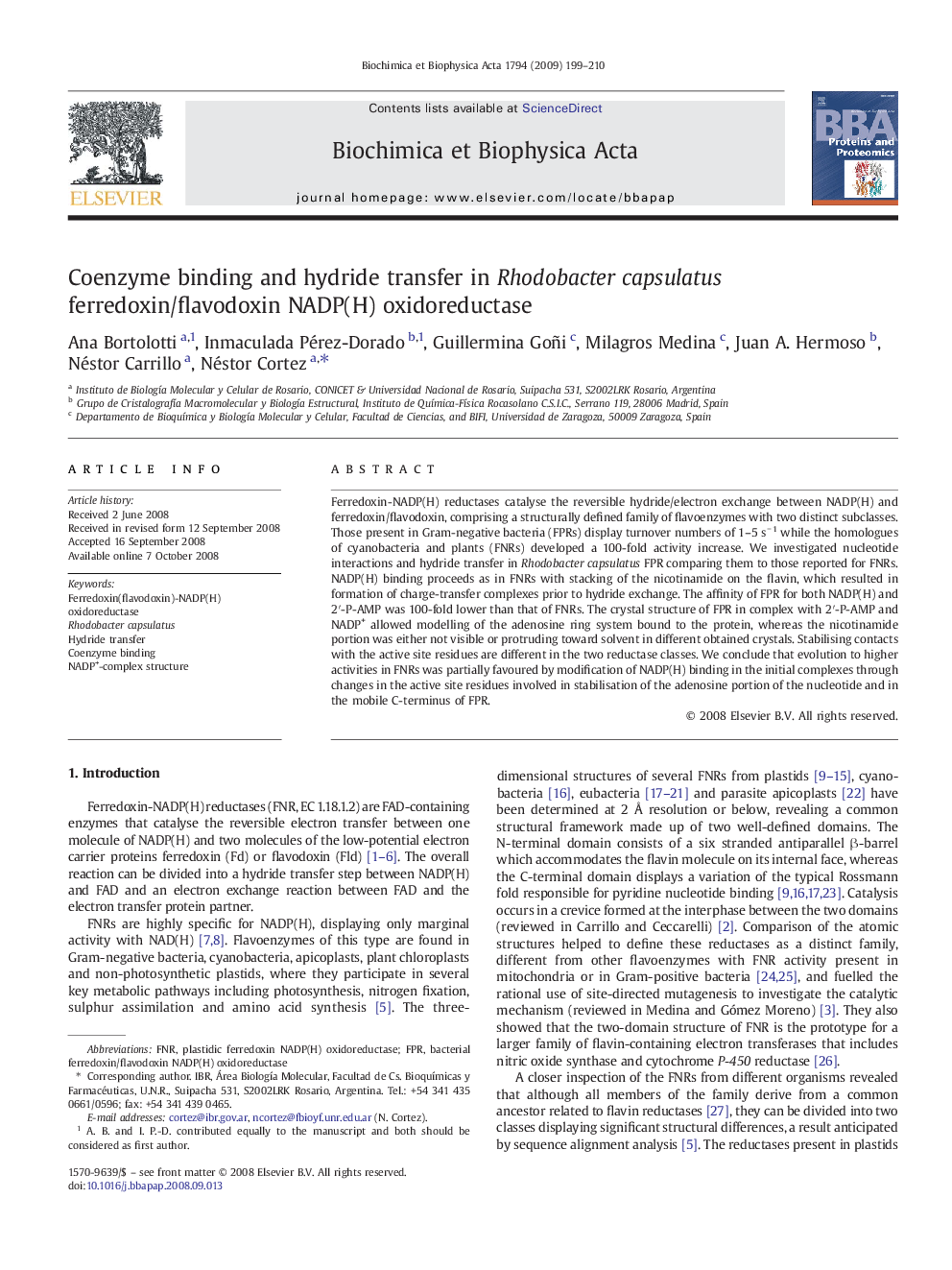| Article ID | Journal | Published Year | Pages | File Type |
|---|---|---|---|---|
| 10537071 | Biochimica et Biophysica Acta (BBA) - Proteins and Proteomics | 2009 | 12 Pages |
Abstract
Ferredoxin-NADP(H) reductases catalyse the reversible hydride/electron exchange between NADP(H) and ferredoxin/flavodoxin, comprising a structurally defined family of flavoenzymes with two distinct subclasses. Those present in Gram-negative bacteria (FPRs) display turnover numbers of 1-5 sâ 1 while the homologues of cyanobacteria and plants (FNRs) developed a 100-fold activity increase. We investigated nucleotide interactions and hydride transfer in Rhodobacter capsulatus FPR comparing them to those reported for FNRs. NADP(H) binding proceeds as in FNRs with stacking of the nicotinamide on the flavin, which resulted in formation of charge-transfer complexes prior to hydride exchange. The affinity of FPR for both NADP(H) and 2â²-P-AMP was 100-fold lower than that of FNRs. The crystal structure of FPR in complex with 2â²-P-AMP and NADP+ allowed modelling of the adenosine ring system bound to the protein, whereas the nicotinamide portion was either not visible or protruding toward solvent in different obtained crystals. Stabilising contacts with the active site residues are different in the two reductase classes. We conclude that evolution to higher activities in FNRs was partially favoured by modification of NADP(H) binding in the initial complexes through changes in the active site residues involved in stabilisation of the adenosine portion of the nucleotide and in the mobile C-terminus of FPR.
Related Topics
Physical Sciences and Engineering
Chemistry
Analytical Chemistry
Authors
Ana Bortolotti, Inmaculada Pérez-Dorado, Guillermina Goñi, Milagros Medina, Juan A. Hermoso, Néstor Carrillo, Néstor Cortez,
